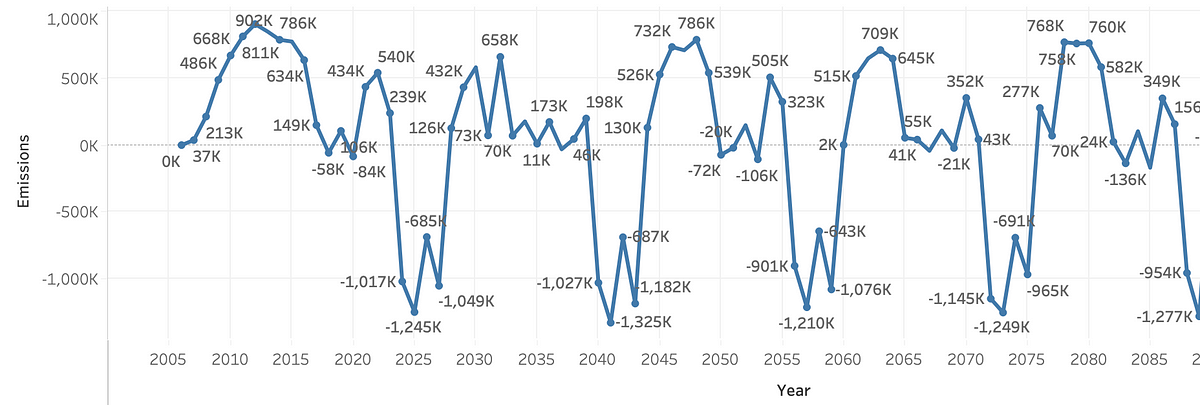Because the voluntary carbon market continues to draw elevated consideration, exercise, and funding, there’s an acute want for extra and higher information on the tasks that concern credit.
In any case, as firms look to speculate tons of of 1000’s, if not tens of millions, of {dollars} into their carbon offsetting (and wider sustainability) efforts, it’s worthwhile to have the most effective information on the tasks which might be accessible to them.
To that finish, we’ve aggregated information on almost 20,000 tasks and over 275,000 retirement transactions in an effort to present the most effective overview of the market. We’ve augmented that information with pricing, data on brokers and corporates, in addition to inputs from our companions like BeZero, Emsurge, and AirCarbon Trade.
With a purpose to go a number of steps past, we’ve begun to faucet into the wealth of knowledge that exists within the mission design paperwork (PDDs) and different paperwork related to tasks. This data is very helpful to those who are trying into tasks — certainly, one analyst on this area described his job as distilling a 250 web page PDDs into 5 web page overviews.
Up to now, the one approach to do this has been to obtain the tasks manually, and scan by way of them one-by-one. This enables customers to uncover the information they want, however it’s not scalable or environment friendly.
Now we have digitized PDDs from Gold Commonplace and Verra tasks, enabling two key functionalities: key phrase and phrase searches, and desk extraction. Beneath are some use instances for a way these strategies could also be utilized.
Some time again, a dealer I had spoken with shared their frustration: a consumer, who sponsored a well-known bicycle race, was seeking to offset solely with tasks that had something to do with bikes. However, how might one discover that data?

In search of the needle within the haystack tasks is a superb use case for PDD looking out. By trying to find ‘bicycle’ as a key phrase, we had been in a position to establish ~30 tasks which may be a match. Not all tasks are as related because the Bikes for the Planet mission (which was just lately auctioned on AirCarbon), however this methodology permits anybody to create a listing of potential tasks to have interaction with as they search for area of interest or extremely sector-specific tasks.
For these seeking to uncover extra technical details about tasks, with the ability to filter by way of the tasks to drag out all related ones can save hours of analysis. That may be one thing as easy as figuring out all tasks that point out using ‘LiDAR’ or ‘distant sensing’, or it may be used to search out tasks that embrace a monetary evaluation as a part of their utility.

As an example, the screenshot above exhibits an instance results of a mission that mentions each ‘IRR’ and ‘NPV’. These which might be taking a look at organising their very own mission and need to see how previous tasks have modeled development, or these in search of tasks to put money into, will discover such a data invaluable.
Looking for particular characters, like @, permits customers to search out contact data for tasks in a short time. Somebody seeking to higher perceive the VCM market in Brazilian forestry, for instance, would seemingly need to converse with as many individuals from as many tasks as potential. Looking for @ amongst all related PDDs will pull in a number of contact factors for every mission, permitting customers to rapidly establish a listing of contacts to have interaction throughout a number of tasks.

Land use tasks that allocate credit to a buffer pool want to clarify their dangers (or lack thereof), in an effort to decide the scale of the buffer. This information could be discovered within the Danger Factor documentation, or within the PDD, if it’s included. Our desk extraction functionality permits customers to rapidly establish which tasks have these tables related to them — by looking out just for tasks which have particular key phrases of their tables — and extract the information for additional evaluation. This will help analysts establish the tasks with the best (or lowest) pure danger, and enter this datapoint into their potential funding or buying selections.

One information level that we have now already begun to include into our Premium Dashboard is the annual emissions throughout mission lifetime. Every mission studies the common annual emissions reductions / credit, however this may be deceptive: tasks hardly ever have a constant variety of credit they generate yearly. In some years, they could even generate unfavourable credit. So as to have the ability to precisely assess the variety of credit a mission will generate, it’s vital to know the precise annual forecasts, which we’ve extracted and begun to include into our database.


It’s additionally a useful gizmo to have the ability to evaluate mission forecasts with what the precise issuances have been 12 months over 12 months. For instance, if a mission developer persistently overestimates the variety of credit their tasks will concern, it’s helpful to know prior to creating any offers with them.










![Ouch! Here is What Hurts Your Credit score Rating [INFOGRAPHIC] | CASH 1 Weblog](https://www.cash1loans.com/Portals/0/Images/blog/credit/credit-repair-what-hurts-your-credit-score-f.png?ver=qj8tbZZMl_eFnnvJTEcv0g==)
